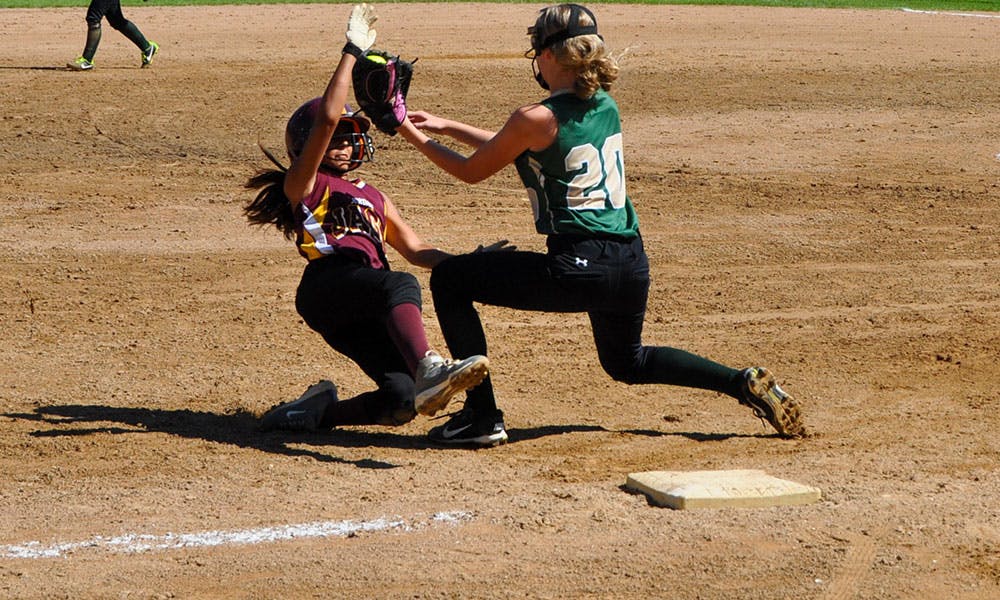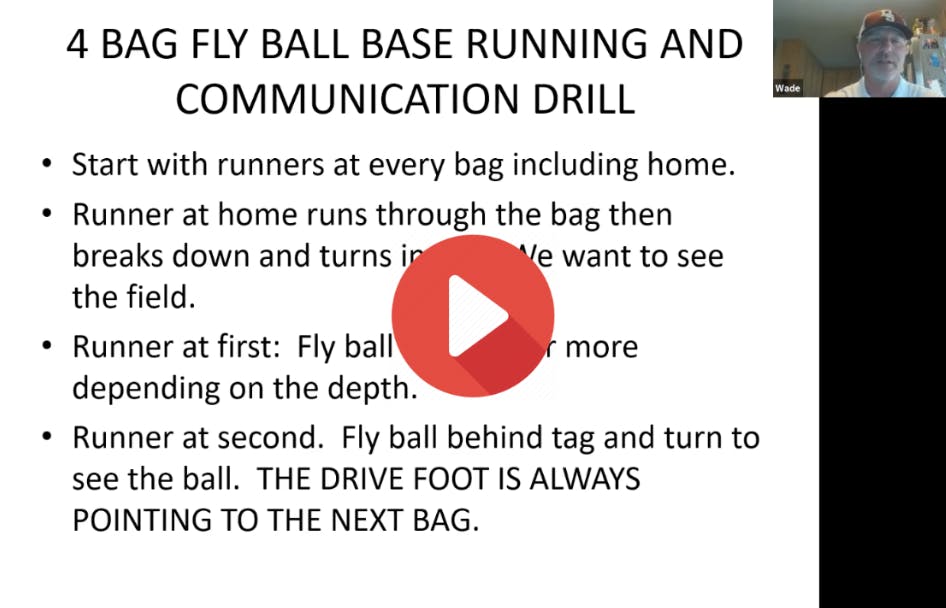Featured courses
- How to Become a Softball Pitcher by Brandon Ogle
- How to Perfect Pitch-Calling For Your Softball Team by Grant Young
- How to Maximize Your Softball Pitcher's Abilities by Grant Young
- How to Create a Softball Team’s Offensive Mindset by Grant Young
- Three Competition-Based Hitting Drills For Your Softball Team by Grant Young
- Three Great Drills For Softball Infielders by Grant Young
- How to Find and Develop Elite Softball Pitchers by Grant Young
- How to Create Runs on the Softball Basepaths by Grant Young
- 5 Biggest Mistakes Softball Coaches Make by Brandon Ogle
- 3 Softball Drills To Do At Home by Brandon Ogle

How to Create Runs on the Softball Basepaths
- By Grant Young
Because the bases in softball are 60 feet away from each other, there’s a common misconception that softball baserunning isn’t as important a part of the game as hitting, fielding, or pitching.
Yet, any coach who believes that’s true is doing themselves a disservice when it comes to maximizing their own team’s potential.
A softball team’s ability to run the bases well can spell the difference between winning and losing. And because softball is a game of inches, learning how to teach and practice the fine details of baserunning (such as being able to slide effectively, crafting ways to score from third base, and communication between coaches and baserunners (and between baserunners and other baserunners)) could steal your team some wins throughout the course of a season; especially in the postseason, when the margin between teams is often minuscule.
And Wade Womack knows this better than just about anyone else.
Coach Womack has been a head coach of various high school women’s softball programs for over two decades and has been running the Dripping Springs High School’s softball program in Dripping Springs, Texas, for over 10 years alone. Coach Womack has guided two teams to the State Tournament at Medina Valley and won the State Championship in 2007.
This past 2024 softball season, Coach Womack’s Dripping Springs team won the 6A District 26 Championship. Head coach Wade Womack was named the district’s Coach of the Year.
Coach Womack believes that the secret to his sustained success has been the advantage his teams have over opponents on the basepaths. He imparted a few of his best baserunning lessons and insights in his ‘Creating Havoc on the Basebaths & Other Philosophies’ course from the Texas High School Coaches Association. This course is a gold mine for any softball coach who wants to turn their team’s baserunning into a lethal winning weapon.
15 Ways a Runner Can Score From Third
While Coach Womack noted that there are probably some ways a runner can score on third that he missed, the fact that there are 15 is pretty astounding. In fact, we’ll note that Coach Womack missed a balk, so there are at least 16 ways a runner can score from third.
But Coach Womack’s 15 ways are: base hit (including single, double, and a triple), sacrifice fly, passed ball, wild pitch, obstruction, suicide squeeze, safety squeeze, fielder’s choice, straight steal of home, delayed steal of home, error off a batted ball, catcher overthrows pitcher after the pitch, catcher throws ball away on attempted pickoff, 1st and 3rd base strategies/set plays, and bases loaded walk/hit by pitch.
And the reason Coach Womack brings these up are to highlight the importance of getting runners over to third base. Especially for a team that is more focused on creating contact and playing small ball as opposed to driving the ball out of the yard, a main focus of yours should be getting runners over to third base at all costs.
Especially in the game’s lower levels, where mistakes among fielders and pitchers are more common, getting a runner to third base is nearly as good as scoring them outright.
4 Bag Fly Ball Base Running and Communication Drill

In his course, Coach Womack details a drill that he likes to use to instill proper base running techniques and outfield communication among his players. He calls it the 4 bag fly ball base running and communication drill.
It begins with players starting at all four bases. From there, the drill starts with the runner at home running out a ground ball to first then turning inside after hitting the bag, in order to assess whether one of the middle infielders is being lazy and allowing an opportunity to steal second.
After that, the runner who started on first will simulate a fly ball getting hit, where they get halfway to second base and watch to see whether or not the ball is caught.
After that rep, the runners at second will practice tagging up and heading to third. When the ball is hit or thrown into the outfield, the runner will watch the ball with their drive foot always pointing to the next bag. As soon as the ball is caught, the runner should tag up and go for third.
And the runner at third base will tag up and advance in the same way when it’s their turn.
In addition, Coach Womack notes that while doing this drill, he’s hitting the fly balls between outfielders in two positions (ideally center and right field), and having them practice communication with one another.
Sliding
Coach Womack notes that learning how to slide properly is not only a crucial part of being a good team on the base paths, but it’s also integral to keeping your players safe.
One of Coach Womack’s rules is that players are not to slide head first into home plate under any circumstance. He also notes that coaches should be instructing players to slide to the outside of every bag, in order to best avoid the tag during a throw.
The one exception to this is if the runner is sliding into second base and the second baseman is coming toward the bag to cover. In this situation, the runner will likely want to slide toward the inside of second base in order to be as far away from that tag as possible.
Another reason to slide to the outside of home plate is because, even if the catcher is obstructing the bag, that call rarely gets made (especially at the high school level).
Incorporating these tools from Coach Womack is a great way to improve your team’s baserunning and begun running your way to wins.

